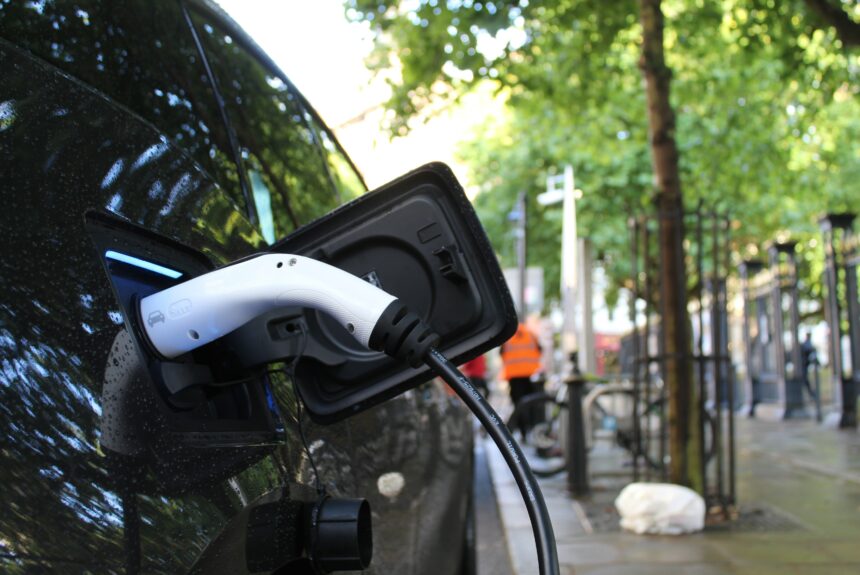California has once again taken the lead in climate action with aspirations of banning gas-powered vehicles by 2035, a mere twelve years down the road. While environmentalists have praised this move as the kind of bold steps needed to address climate change, other states would be wise not to follow down California’s path.
In 2020, California Governor Gavin Newsom set a goal via executive order to complete the process of banning gas-powered vehicles by 2035 and called on state regulators to devise a plan to achieve this end. The plan, announced by the California Air Resources Board last week, lays out a ‘roadmap’ for auto manufacturers to bring more zero-emission vehicles (ZEVs) and plug-in hybrid electric vehicles (PHEVs) to market, culminating in all new car sales being ZEVs or PHEVs by 2035.
>>>READ: The Biggest Obstacle to EV Sales is the Government
The Advanced Clean Cars II rules, as it’s known, require that 35 percent of new car sales be ZEVs and PHEVs in 2026, swell to 68 percent in 2030, and reach 100 percent by 2035. Regulators will achieve this by amending already stringent low-emission and zero-emission vehicle regulations—essentially mandating standards that gas-powered cars simply can’t meet, thus driving them out of the market.
Sounds simple enough, right? Internal combustion engines produce carbon emissions, carbon emissions contribute to global warming, so cut gas-powered cars out of the equation and you’re on your way to curbing climate change. The plan, however, is complicated by two glaring realities: EVs are a luxury item, making their wide adoption unlikely, and the electricity used to charge EVs still requires fossil fuels.
An inconvenient truth about EVs is that, for many, they are prohibitively expensive. Currently, only 16 percent of Californians can afford to own an EV or plug-in hybrid. Low-income Californians won’t be able to afford the switch, so Governor Newsom’s policy will leave them worse off.
The average price of an EV sold in California is close to $60,000 and the average price of a used EV in the Golden State isn’t much better at over $41,000. Those price tags are double a low-income earner’s annual salary. Can we really expect this segment of the community to trade in their used Honda Civic for a $60,000 Tesla?
And the high costs don’t end there. The Mack Institute for Innovation Management at the Wharton School for Business calculated the average cost to replace a long-range 100/kWh battery (common in a Tesla, for example) and found it to be at least $16,100 before labor and taxes. Because EV technology is relatively new and not yet widely adopted, replacement parts and maintenance are naturally going to be expensive.
With gas averaging $5.23 in the state, one might expect to save some money by skipping the pump and plugging in their car at home. But California residents pay 20 percent more than the national average for electricity, thanks in large part to regulation and taxes, so EVs won’t necessarily save consumers money on refueling.
Rather than waiting for market demand to build organically and supply to follow, Newsom’s government has opted to mandate and subsidize this transition. If a consumer desires and can afford to purchase an EV, they should be able to do so. But the idea that the government will force consumers to purchase a particular product is an affront to consumer choice. And that type of market distortion will inevitably precipitate unforeseen negative consequences for consumers and producers alike.
Aside from high costs, grid reliability presents another wrinkle in Newsom’s plan. California’s grid is already under strain after the state has increased its share of renewable power generation. Mandatory blackouts have become standard for California residents, especially in the hot summer months when energy usage increases as people turn on their air conditioners.
>>>READ: Free Market Reforms Can Put More EVs on the Road
As of 2021, renewables made up roughly 33 percent of California’s total power mix, with solar and wind accounting for 14 percent and 11 percent, respectively. The Golden State is proud of this fact, leading the country in renewable power generation. The accomplishment, however, has a downside.
Because of solar and wind’s intermittent nature, California residents have grown accustomed to receiving “Flex Alerts” that urge consumers to “conserve electricity, especially during the late afternoon and early evening, when the grid is most stressed due to higher demand and less solar energy.” Adding millions more EVs that must be plugged into the grid to recharge will exacerbate an already fragile system. Likewise, as the share of the state’s renewable power generation grows, so too does its dependence on fossil fuels because unreliable renewables require baseload backup power such as from natural gas. When enacted, Newsom’s plan will force the Golden State to choose between meeting renewable energy goals and maintaining a stable energy grid.
California is laying the groundwork for an energy catastrophe by mandating the sale and purchase of EVs without first ensuring that its energy grid can accommodate such a surge in demand. Likewise, banning gas-powered vehicles and forcing consumers to purchase electric vehicles that plug into a grid still reliant on fossil fuels will do little to affect climate change and will most certainly be a burden on the poor. The so-called national leader in environmental policy has put the EV cart before the carbon-free energy horse. The rest of the country shouldn’t follow.
Kat Dwyer is a contributor to C3 and Young Voices. She is also co-host of the Whiskey Bench podcast. Follow her on Twitter @KatJDwyer.
The views and opinions expressed are those of the author’s and do not necessarily reflect the official policy or position of C3.
